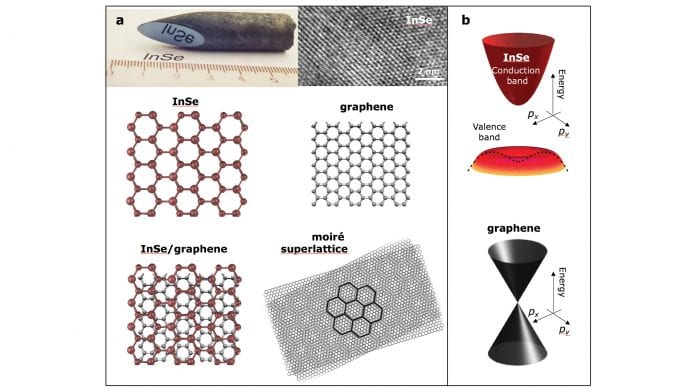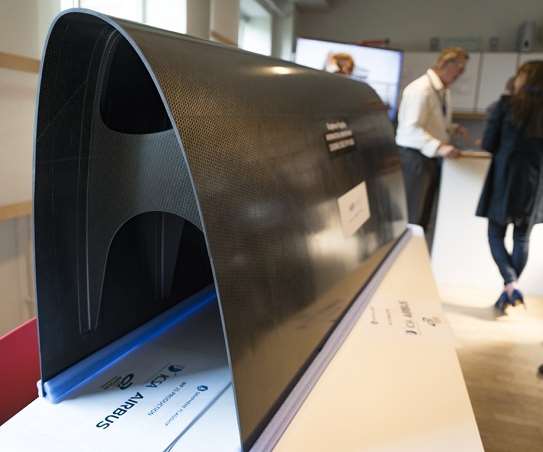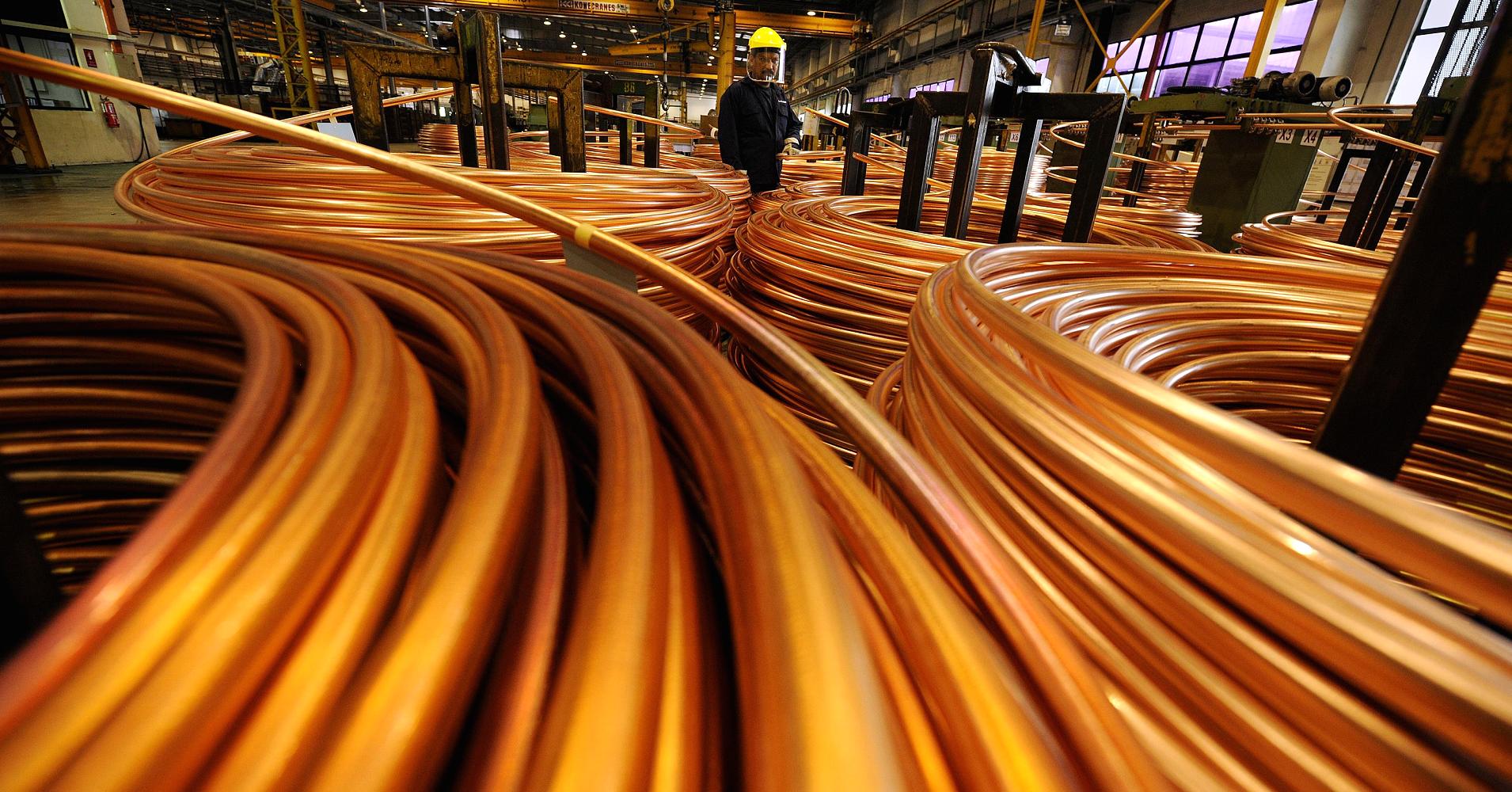Professor Amalia Patanè discusses some of the unprecedented opportunities offered by 2D systems, and the 2D semiconductor indium selenide (InSe) and its heterostructures.
The progressive miniaturisation of electronic devices has propelled several technologies to higher performance and efficiency, but further progress and innovative solutions to global challenges (security, health, energy, etc.) require a shift from traditional approaches towards transformative material systems and integration technologies. Atomically thin layers of van der Waals (vdW) crystals and their heterostructures,1 generally branded as two‐dimensional (2D) materials, offer a great opportunity to study and exploit quantum phenomena for a wide range of applications. These crystals have strong covalent atomic bonding in the 2D planes and weak vdW attraction between the layers, which enable the fabrication of stable films down to the atomic monolayer thickness.
The ongoing world‐wide research on 2D systems and materials has largely focussed on graphene, the wide-gap insulator hexagonal boron nitride, the narrow‐gap semiconductor black phosphorus, and transition metal dichalcogenides.2 Among these 2D systems, an exciting and rapidly growing development involves the metal chalcogenide InSe (see Fig. 1a).3-5 This 2D material has a band gap energy that increases markedly with decreasing layer thickness down to a single layer, enabling the fabrication of high-responsivity diodes with spectral response from the ultra-violet (UV) to the infrared (IR) range. It has a relatively low mass conduction band electrons and high electron mobility even in atomically thin films, larger than in silicon-based field effect transistors.
Furthermore, its band structure presents unique features: it has an almost flat, slightly inverted ‘Mexican-hat’ valence band dispersion (see Fig. 1b) with one-dimensional van Hove singularities in the density of states.6 These remarkable properties in combination with the compatibity of InSe with other 2D systems offer unprecedented opportunities to create new quantum systems, such as ‘giant’ quantum Hall plateau devices7 and single electron transistors.8
The fundamental science of 2D systems
The fundamental science of 2D systems is a rapidly developing and vibrant field and more breakthroughs are expected as new concepts emerge from experiment and theory.
Challenges include understanding how the layers interact each other and with different substrates, energy band alignments, dielectric screening, electron-phonon interactions, charge ordering due to carrier-correlation, etc. Due to the absence of dangling bonds in vdW heterostructures, it will be possible to study defect-free stacked layers without restriction on the lattice mismatch.
This will enable studies of new physical properties: the complex nature of the inverted ‘Mexican-hat’ valence band, which offers opportunities to manipulate electron interactions and correlations, and to study excitonic physics; electron-phonon interactions, carrier relaxation and exciton formation and their manipulation by strain; electrical and optical properties of moiré superlattices with a period and electronic properties that can be fine-tuned by changing the twist angle between the layers (see Fig. 1a, bottom).
These quantum phenomena can provide an exciting platform for the design of new device concepts (see Fig. 2a-c), including miniaturised phototransitors with a single or stack of 2D layers between two graphene electrodes (see Fig. 2b). Also, since InSe can sustain high mechanical strain, it could provide novel means of modulating electrical and optical signals by strain for flexible electronics and optoelectronics.
Interdisciplinary research
Beyond these opportunities, there are exciting prospects for interdisciplinary research by exploring and exploiting surface phenomena, such as oxidation and intercalation.9-11 For example, thermal- and photo-annealing in an O2 controlled environment could be explored to oxidise surfaces, thus converting a few surface layers into a transparent and conducting oxide (e.g. InSe into In2O311).
The propensity of these crystals of nanoscale thickness to oxidise in air at temperatures >100ºC or when illuminated with intense laser light is at first sight disadvantageous to future device applications; however, it could be turned to an advantage by using it to modulate and pattern the in-plane optical and electrical properties of the layers or to create topological crystals.9 The intercalation of atoms into the interlayer gaps of vdW crystals is also an interesting prospect.10
Environmentally-friendly alternative to fossil fuels
For example, hydrogen (H2) represents the most promising environmentally-friendly alternative to fossil fuels as it produces a high energy yield, is pollution free, abundant and renewable. 2D InSe is a promising catalyst for photocatalytic splitting of water into O2 and H2. Water molecules, which are absorbed on the InSe surface, should decompose when exposed to solar radiation (see Fig. 2d).
Thus, it should be possible to convert solar energy into clean and renewable H2 fuel. In order to achieve high efficiency, the photo-catalyst should have a band gap around 2.0 eV and its band edges should match the redox potentials of water, which are 4.44 eV for the reduction (H+/H2) and 5.67 eV for the oxidation (H2O/O2), respectively. These energy values could be matched by design of the InSe layer thickness. Furthermore, the major problem in using H2 as a fuel in transport is its safe storage as this normally requires materials that are subject to high pressure. InSe could accumulate H2 molecules in the vdW gaps between the atomic planes at relatively low pressure: in bulk InSe, the volume of the vdW gap comprises about 40% of the crystal, with an internal surface of this space of about 2x103m2 per 1cm3. Thus vdW crystals could be ‘fuelled-up’ with H2 by intercalation and then H2 could be extracted back, when needed, by de-intercalation (see Fig. 2e).
Scalable synthesis
While breakthroughs on these materials have been achieved using thin-films mechanically exfoliated from bulk crystals, the scalable synthesis of the layers and their controlled doping and composition are still in their infancy.12 This represents a vital step towards the reliable production of a wide range of new structures for both science and technology. Furthermore, the properties of the layers and their stability are affected by exposure to chemical species in air, such as oxygen. Thus, the use of a clean and controlled containment system for synthesising and measuring these materials is critical.
The fabrication of functional systems also requires the assembly of disparate materials with precise control of interfacial properties. This will require the development of innovative approaches for their integration into multi-layered structures for specific device architectures. Functional devices based on 2D materials have already demonstrated properties and performance parameters that can be superior or more versatile than existing technologies based on traditional semiconductors, such as silicon. However, this may not be sufficient for exploitation.
Distinct advantages and capabilities of 2D materials should be explored, including the possibility of integration with existing photonic and electronic platforms, such as CMOS technologies, with potential to enable large data communications bandwidths, high connection capacities and on-chip optical interconnects. Success in this task has the potential for implementation of 2D materials into vertically stacked integrated circuits that can deliver increased functionality and lower power consumption.
In summary, the 2D semiconductor InSe and its heterostructures offer unprecedented opportunities to create novel functional 2d systems and to open unexplored avenues in quantum science and the translation of the into technologies for digital electronics beyond Moore’s law, quantum optics for fast, secure communications, and quantum detection and imaging for sensing applications, energy, etc., offering wide benefits for society.






